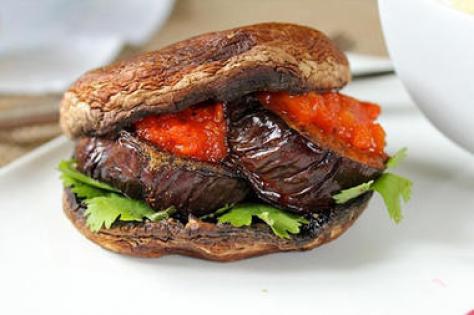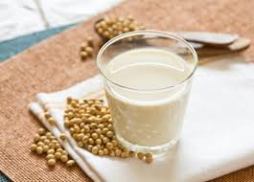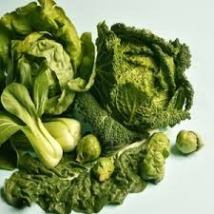You do not have to miss out on your fav Christmas treats - eat slowly and enjoy every mouthful
Many of you will well and truly be in the Christmas spirit with the numerous social gatherings that accompany it. That is the thing with the silly SEASON: it generally involves a warm up of catching up with friends and colleagues, Christmas day that can be celebrated over three days, and a continuum of parties and festivities as we welcome the New Year.
Friends and family are almost always celebrated over a drink or a meal, which is one of the reasons why food is an important pleasure to cherish.
However, during the silly season our healthy routines are often replaced by more times of over-consumption, more alcoholic drinks than the standard two a day and ‘sometimes’ foods featuring more regularly on the menu.
Some people also develop an ‘all or nothing’ approach to eating and just write-off the next few weeks regarding healthy eating.
If Christmas was only celebrated on the 25th it really wouldn’t matter what we ate or drank because it wouldn’t make a big difference to our overall health and waist line. However, considering the number of meals and drinks you will share with family and friends over the coming weeks, it is worth finding the balance, in order to celebrate this fantastic time of year without compromising the hard work you have done throughout 2013.
Here are some tips to help.
1. Keep Moving
Although your gym or local pool may be closed over the next few weeks, you can still keep up regular physical activity levels.
Keeping active will help to balance any slight over-indulgences you encounter and keep your energy levels up to face the festivities. Fit exercise in by:
- Catching up with a friend over a walk, bike ride or swim.
- Organise a family game of cricket or soccer after Christmas lunch.
- Use the stairs instead of the elevator when you are doing your last minute Christmas shopping.
- Save some time to do some exercise before you head to your next social outing, even if it is less than what you would normally do.
2. Facing endless nibbles at a party?
Attending a party where the drinks are flowing and the platters are abundant can be very confronting if you’re putting your health first. But choosing wisely, eating slowing and doing a little prep before you go can help to help balance the potential overindulgences.
- Offer to bring a plate of food and make sure it is a healthier option to balance some of the more indulgent platters that may be on offer.
- Some great options include prawns, salmon and vegetable mini frittatas, nuts, sushi, stuffed mushrooms, a seasonal fruit platter or vegetable sticks with a tasty dip such as hummus, cottage cheese with herbs or a tomato salsa.
- Just like when you head to the supermarket, don’t head to a party on an empty stomach. We all know that an empty stomach with an accessible spread means ultimate over-consumption. Have a nutrient dense snack or light meal before you leave. Some easy and filling ideas include a fruit smoothie, a small handful of unsalted nuts, fruit, a wrap with lean meat and salad or a vegetable omelette.
- Drink plenty of water before you leave to ensure you are well hydrated and do not mistake thirst for hunger.
- Limit deep fried or creamy options such as spring rolls, sausage rolls and creamy dips.
- Choose the nibbles that you like (not everything that is on offer) and eat slowly and enjoy.
3. Alcohol
Alcohol is high in energy (kilojoules). In fact one gram of alcohol has almost as much energy as one gram of fat. This means that consuming alcohol in large amounts over a period of time will lead to weight gain.
Alcohol is bound to feature as part of the Christmas festivities, however reducing your alcohol intake will help you to feel healthier and fitter over the Christmas period. Here are some ways to cut the kilojoules from alcohol:
- Make ‘Mocktails’ with ingredients such as soda water, diet soft drinks, fresh lime, fruit and little fruit juice.
- Drink from a small wine glass.
- Opt for light or mid-strength beers as these are lower in energy (kilojoules). Don’t be fooled by the low-carb beers as these generally have the same energy content as regular full strength beers.
- Mix spirits with soda water, diet tonic water or diet soft drinks instead of the sugar containing alternatives.
- Alternate alcoholic drink with water, soda water, diet tonic water or diet soft drink. This will help to keep you hydrated and reduce the amount of alcohol you consume.
- If you know you have many Christmas and New Years parties coming up, have more alcohol free days at home.
4. Enjoying a Christmas feast
Often we are faced with a spread of options at a Christmas feast. This often means that you may not have full control of what is on to offer. However, you do have control over how much you eat.
The portion plate guide is a great tool to compose a balanced meal and avoid overconsumption, especially if you are watching your weight or are faced with numerous Christmas feasts over the silly season.
- This means allocating one quarter of your plate to a protein-based food such as roast chicken or turkey, one quarter of your plate allocated to a carbohydrate based food such as roast potato, pasta salad or a quinoa salad and half of your plate allocated to salads or non-starchy vegetables.
- Remember that filling up on salads and vegetables will add the bulk without the kilojoules to any meal.
- If you have seafood on offer this Christmas, not only are you lucky because of the beautiful produce we have, but also you can indulge in a little more as seafood is lower in energy and saturated fat content.
5. Enjoy the good quality treats
I know that in the weeks leading up to Christmas I am already thinking about my mum’s homemade slices. Whether your favourite Christmas treat is a dessert, grandma’s Christmas pudding or good quality chocolate, you can enjoy it.
- Just try to enjoy your favourite treats in small amounts and take the time to enjoy them!
- Balance them with some fresh berries on the side, a meal in a smaller portion and a bit of exercise that day.
It is important to enjoy this special time of year with good food and drinks shared with family and friends, however balancing the more indulgent choices with smaller portions, some nutritious options and some exercise will ensure you prevent your waist line expanding into the new year.
As seen first on motherpedia.com.au
I want to take this opportunity to wish you all a very Merry Christmas. Thank you all for following my new blog in 2013 and I hope I can bring you some fun recipes and great tips in 2014.
Remember that if you want to subscribe to make sure that you don't miss out on updates, enter your email address either at the bottom of the page (if using your phone to view this) or on the right hand side of the page. Thank you.







